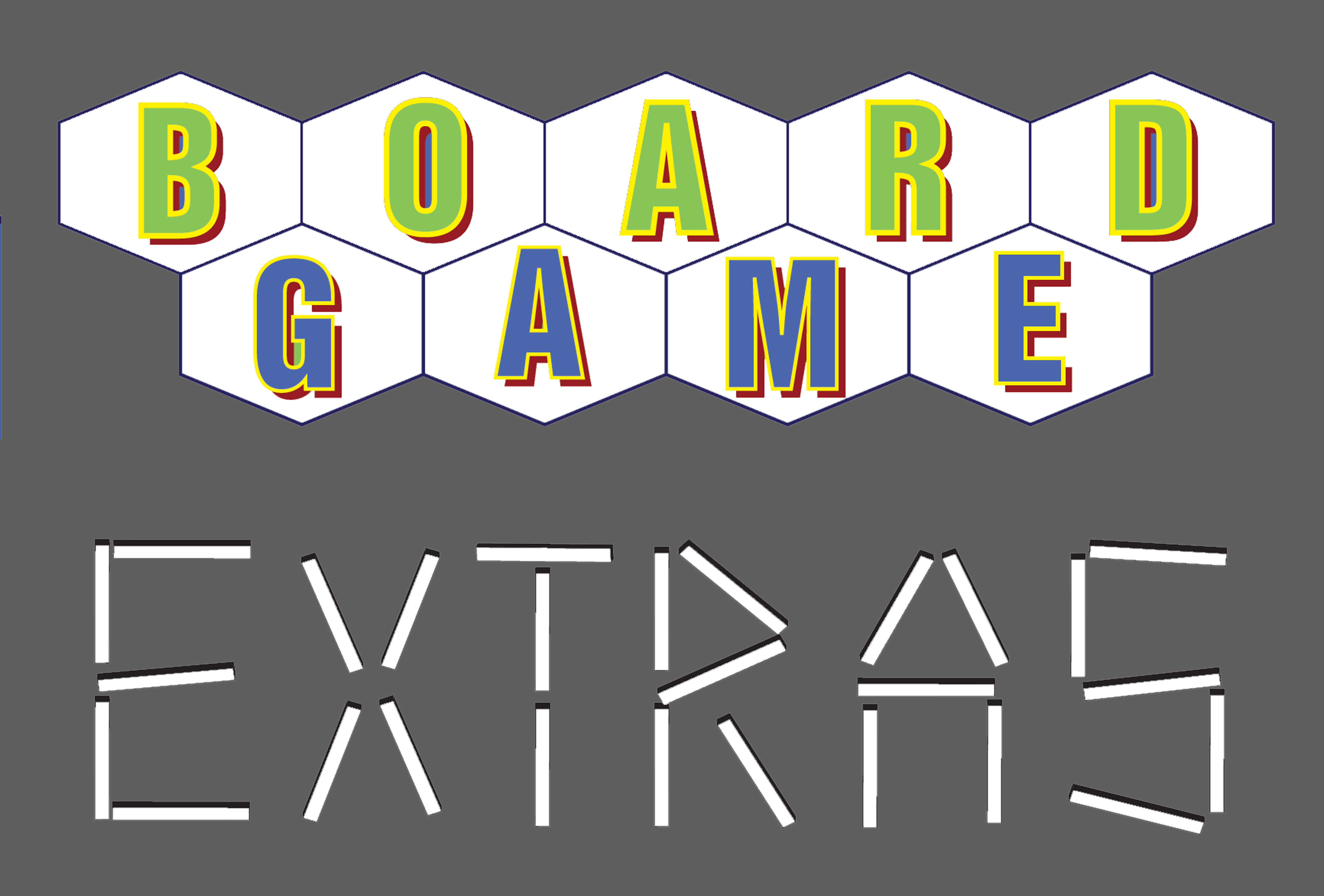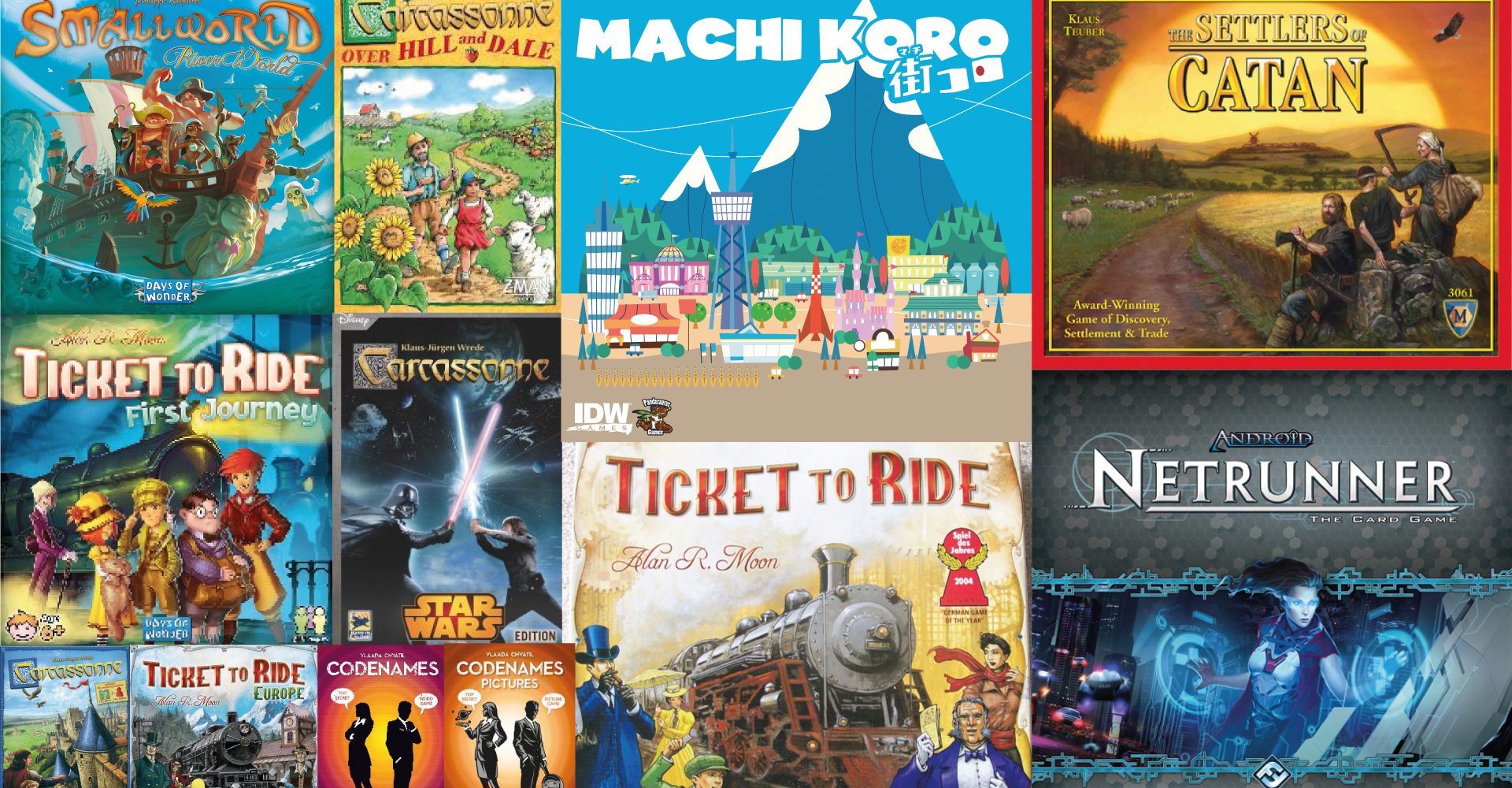We are delighted to welcome Luke Hector as a guest blog writer this month.
Never judge a book by its cover. That’s a phrase that many of us live by and one that should be applied to board games on a regular basis. A decent box cover will help sell a game and a dull one will make someone hesitant to pick it up off the shelf or click on the picture icon.
There’s also a slight deviation to that though with how weird the box looks. A box can look insanely pretty but if it makes no sense or is odd then you’re going to get a mix of reactions from intrigued to “what on earth”. Well this is a poster child for such a feeling because even though it’s very colourful, it really does make you think the latter of those two options and either I’m being thick or there’s no reason why this cover is relevant to the game!
However it was getting a lot of Essen buzz and it’s made by a publisher from my home country, in fact they’re in Cornwall which is next door to my original home county. So why not, I thought I’d give it a look as it’s nice to find some board games made closer to home. It’s touted as “worker placement with dancing bees“………………..did I really just say that?

“A flashy cover, but what in the world???”
Designer: Mike Nudd (2014)
Publisher: Grublin Games Publishing
# of Players: 2-4
Ages: 8+
Play Time: 90 Minutes
BGG Rank/Rating: 3114 / 7.52
Dice Tower 2014 People’s Choice Rank: n/a
Category: Dice Worker Placement with Area Majority
- Busy Bees
Despite the title, the goal of the game is to build up a hive and create a set amount of honey before the other players. This game borrows the same worker placement dice mechanic that exists in Alien Frontiers in that you roll dice and the values on those dice provide you with options of where to place those dice to perform special actions. These actions include expanding your hive, laying eggs, hatching eggs to provide more bees (dice) collecting nectar and converting this nectar to honey.
The collection of nectar isn’t a simple case of “pop a bee, get some pollen” though. There are six types of flower available, one for each value on the die. And how much nectar you collect comes down to area control against the other players as all the bees are fighting to grab every last piece of the stuff.
“These are good enough to make up for a board and it keeps the cost of the game down”

Each turn you’ll place your worker bees, resolve the actions and continue in this manner until one person has created enough honey to meet the game’s end condition.
- Bumblebee……Roll Out!
The dice are the highlight of the set. They’re quite small but there’s lots of them per player and these represent your workers. They’re standard dice except for the “hex” style font and the actual bumblebee picture as a “1” value. Really nice to look at and fun to roll if you’ve gone down the mass-hatching route of collecting a ton of bees. However unlike most worker placement games, more workers doesn’t always equate to the best tactic. Games finish very close and the first tie-breaker is the least amount of workers. So being efficient is potentially better than sending out a horde.

“All the dice are great when you have an army of bees”
As for the rest of the game, instead of a board you have “cards” to show the action spaces you can choose. Despite being a cheap way out, they’re very colourful, very intuitive and when sleeved make a fine alternative to what could be a superfluous board. The Queen Bee cards, which are essentially a tacked-on special ability card mechanic are also very colourful, but these could have benefited from some wording to explain their function as quite often you find yourself referring back to the rule sheet to remind yourself. The weak link falls down to the eggs and hive hexes. The eggs are simply white wooden discs and the hexes are quite thin and basic. A little extra artwork to brighten them up couldn’t have hurt considering the effort that went into the dice and cards.

“I don’t deny the artwork is great, but there’s plenty of space to put some explanations in”
Speaking of the rule sheet, despite the fact that I usually hate rule-sheets (much prefer a nice booklet) this one is very easy to follow. The game is not complicated by any means but the rule sheet does an excellent job of clearly explaining how the turn sequence works and what each action space does. Once you’ve read it and played a couple of rounds, you know what you’re doing and off you go. This was obviously the intention in design as this makes it very accessible to younger players or non-gamers as a Euro introduction on par with the likes of Stone Age. The theme itself is also very light and appealing to the younger audience but still makes sense for us old people!

“The back of the rule-sheet – it sets out the action cards in the order they are played and is great”
- Cross Pollination
If the worker placement aspect isn’t enough to raise some frustration in the normal fashion, then you have the pollen collection based on area control. Now for a Euro game this is pretty thematic, you have to admit. The value on the die dictates which flower you place it on, but there is a limit of only 2 nectar max available per flower and you only get that if you’ve got the most bees present. Second place only gets one and ties result in even less. So suddenly as if fighting for your space on the other action cards wasn’t bad enough you’re now battling the other players for pollen, which like I said is really thematic as that’s how it is with bees in general. It’s a complete crowded mess when you see a hive of them get going. It’s an entertaining part of the game, though obviously there’s more contention with more players.
- Bees Are Taking Their Sweet Time
There is a slight scaling issue with regards to players and the different game lengths. You can pick from a short, standard or long game and literally the only difference is simply how much honey you have to produce. And never, never, ever should you play the long game. This is a neat little game but if you’re playing for longer than 60 minutes (90 max) it’s overstayed its welcome. The long game even with two players takes far too long for a simple introductory worker placement game.
Four players can sometimes drag the game out if you’re playing with AP players, but that goes to show how many options you have available on your turn. And remember that each round players are hatching more bees so by the time you get to the end-game there’s a lot of actions to perform. However some actions require two dice and doubles so you can plan your turn out a bit easier. Always play the short game with four players and enjoy the mess you get in the centre with the flowers, it becomes a real battle for nectar with lots of heated buzzing.
With two players you can happily extend the length as you see fit, but you don’t get as much tension with the nectar collecting. Three players is the sweet spot however I still suggest the short game rules. The game is nice and simple with plenty of options, best to keep it that way, but if you really want to have control of all the bees in the bag, then you’ll have to play the standard game.
- Verdict

“Looks very nice on the table, BUT get some boxes for the cubes!”
Waggle Dance I would summarise as a pleasant surprise. You look at the cover and the name and just think “what in the world is this game, but once you get past that you realise that it actually packs a good amount of depth borrowing popular mechanics from other games without getting too complicated. If you want an introduction to Euro games that you want to teach younger gamer’s then this is a no-brainer, it teaches worker placement, area control and hand/cube management all in one cheap package.
And despite being a cheap package the components are pretty good quality. Granted I hate rule sheets, but it’s well laid out and everyone likes a board rather than cards but here it just flows so smoothly regardless. It’s not a game I’m going to pull out too often, I prefer a more meaty game in this genre and it’s not going to beat the likes of Alien Frontiers or Kingsburg. But when you want simplicity and options together for a good price, this is a solid choice. . . . . . . . just don’t play the long game.
You Will Like This Game If:
You want a game that’s simple to teach – the rule sheet is set out really well.
You like a game that gives a lot of depth without being too brain burning.
You normally pass up Euro games because of a lack of theme – it’s surprisingly strong here.
You Will Not Like This Game If:
You wanted a game that’s more complex – it’s relatively simplistic one that kids could play.
You play with AP players – there’s plenty of options especially with more worker bees.
You play the long game. Seriously no-one should EVER play the long game.
Liking the sound of Waggle Dance? Available here
You can read more of Luke Hector’s reviews on his blog at: http://brokenmeeple.blogspot.co.uk/
For the latest board game news and releases follow us on Twitter and or Facebook. Plus you can subscribe to receive our latest blogs via RSS feeds.
Like our blogs? Please Retweet, Like or G+

